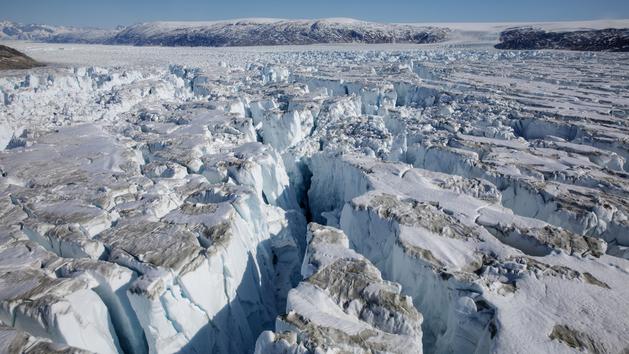As a direct consequence of global warming and higher temperatures in Greenland, a mass of ice of 113km2 has just detached from the largest glacier still existing in the Arctic, Glacier 79 N, Danish scientists announced Monday.
Read also: The Arctic suffers from its heat records
"
We are seeing an increase in the rate (of disintegration) on this ice cap, the largest remaining,
" Jason Box, professor of glaciology at the Geological Institute of Denmark and Greenland, GEUS, told AFP.
On the satellite images broadcast by GEUS, we can see that large areas of ice have now separated from this gigantic glacier in the northeast of the Arctic territory, which emerges into “
fjord 79
” (“
Nioghalvfjerdsfjorden
”).
It's normal for a glacier to release icebergs from time to time, but not huge frozen platforms of this size.
160 km² melting since 1999
Since 1999, the ice cap of the 79 N glacier has lost 160 km2, an area almost twice as large as that of Manhattan Island, the institute said in a statement.
Over the past two years, this phenomenon has accelerated.
"
If hot summers like the ones we have seen over the past two years increase, they will further contribute to the acceleration of sea level rise globally,
" said the researcher.
The melting of the Greenland ice sheet caused the ocean level to rise by 1.1 centimeters between 1992 and 2018, the authors of a study published last December in the journal Nature calculated.
According to a recent study from the University of Lincoln (United Kingdom), the decrease in frozen areas in Greenland is expected to contribute 10 to 12 cm to the rise in sea level by 2100.
Temperatures in the region have risen by about 3 ° since 1980 and reached record levels in 2019 and 2020.
A nearby glacier, the Zachariae, meanwhile saw the disappearance of its ice shelf in 2015 after a similar process of disintegration.
By the early 2000s, it had lost some five billion tonnes of ice per year.

